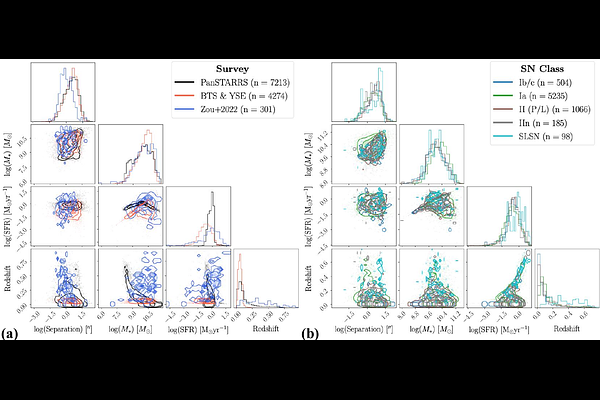SPLASH: A Rapid Host-Based Supernova Classifier for Wide-Field Time-Domain Surveys

SPLASH: A Rapid Host-Based Supernova Classifier for Wide-Field Time-Domain Surveys
Adam Boesky, V. Ashley Villar, Alexander Gagliano, Brian Hsu
AbstractThe upcoming Legacy Survey of Space and Time (LSST) conducted by the Vera C. Rubin Observatory will detect millions of supernovae (SNe) and generate millions of nightly alerts, far outpacing available spectroscopic resources. Rapid, scalable photometric classification methods are therefore essential for identifying young SNe for follow-up and enabling large-scale population studies. We present SPLASH, a host-based classification pipeline that infers supernova classes using only host galaxy photometry. SPLASH first associates SNe with their hosts (yielding a redshift estimate), then infers host galaxy stellar mass and star formation rate using deep learning, and finally classifies SNe using a random forest trained on these inferred properties, along with host-SN angular separation and redshift. SPLASH achieves a binary (Type Ia vs. core-collapse) classification accuracy of $76\%$ and an F1-score of $69\%$, comparable to other state-of-the-art methods. By selecting only the most confident predictions, SPLASH can return highly pure subsets of all major SN types, making it well-suited for targeted follow-up. Its efficient design allows classification of $\sim 500$ SNe per second, making it ideal for next-generation surveys. Moreover, its intermediate inference step enables selection of transients by host environment, providing a tool not only for classification but also for probing the demographics of stellar death.